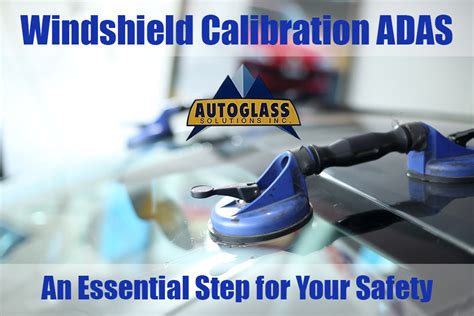Windshield Calibration: An Investment in Your Safety
Modern vehicles rely heavily on advanced driver-assistance systems (ADAS), features designed to enhance safety and convenience. These systems, including lane departure warnings, adaptive cruise control, and automatic emergency braking, utilize sensors and cameras often located behind the windshield. Therefore, any damage or replacement of the windshield can significantly impact the accuracy and functionality of these crucial safety features. This is where windshield calibration comes in – a critical step often overlooked, yet essential for maintaining the integrity and effectiveness of your ADAS.
What is Windshield Calibration?
Windshield calibration is a precise procedure that realigns the ADAS sensors and cameras after a windshield replacement or repair. The sensors and cameras are calibrated to specific points on the vehicle's chassis, and even minor deviations can lead to inaccurate readings and potentially dangerous situations. Think of it like recalibrating a finely tuned instrument – it's essential for optimal performance. During calibration, specialized equipment precisely measures the position of the sensors and cameras, adjusting their settings to ensure they accurately perceive the vehicle's surroundings.
Why is Windshield Calibration Necessary?
Failing to calibrate your windshield after replacement or repair can lead to several serious consequences:
- Inaccurate ADAS readings: Misaligned sensors can provide inaccurate data to the ADAS, leading to false warnings, delayed responses, or even failure of the system to activate when needed. This can compromise your safety and the safety of others.
- System malfunctions: Incorrect calibration can cause the ADAS to malfunction entirely, rendering essential safety features useless. Imagine your adaptive cruise control failing to brake in an emergency situation due to improper calibration.
- Voiding warranties: Many vehicle manufacturers require windshield calibration after replacement to maintain the warranty on the ADAS. Skipping this step could void your warranty, leaving you responsible for expensive repairs.
What Happens During a Windshield Calibration?
The calibration process typically involves:
- Vehicle preparation: The technician will prepare the vehicle by ensuring it's parked correctly and the sensors and cameras are clean and unobstructed.
- Target acquisition: Using specialized equipment, the technician will locate and identify calibration targets, either within the vehicle or external targets positioned by the technician.
- Sensor adjustment: The equipment precisely measures the position of the sensors and cameras and makes any necessary adjustments to their settings.
- Data validation: Finally, the system's readings are validated to ensure accuracy and proper functionality of the ADAS.
The entire process usually takes between 30 minutes to an hour, depending on the vehicle and the complexity of its ADAS.
How Much Does Windshield Calibration Cost?
The cost of windshield calibration varies depending on the vehicle's make and model, the type of ADAS equipped, and the location of the repair shop. However, it's a relatively small cost compared to the potential risks of driving with an improperly calibrated system. Consider it a vital investment in your safety and the longevity of your vehicle's sophisticated safety features.
What if I Don't Get My Windshield Calibrated?
Driving with an uncalibrated windshield after replacement or repair puts you at significant risk. False warnings, delayed responses, and complete system failure are all potential consequences. You could experience unexpected braking, lane departure alerts when you're driving correctly, or a failure of the automatic emergency braking system to activate in a critical situation.
Is Windshield Calibration Always Necessary?
While not all windshield repairs require calibration, significant damage or a complete replacement often necessitates it. Always consult your vehicle's owner's manual or a qualified mechanic to determine if calibration is necessary for your specific situation. It's better to err on the side of caution and ensure your safety.
Can I Calibrate My Windshield Myself?
No, windshield calibration requires specialized equipment and expertise. Attempting to calibrate it yourself is highly discouraged and could damage the sensors or further compromise the ADAS system. Always entrust this procedure to a qualified professional at a reputable auto glass repair shop.
How Often Do I Need Windshield Calibration?
Windshield calibration is typically only needed after a windshield replacement or repair that affects the ADAS sensors and cameras. It is not a routine maintenance procedure.
By prioritizing windshield calibration, you are investing in your safety and the safety of others. Don't underestimate the importance of this crucial step when dealing with your vehicle's windshield. The peace of mind it provides is invaluable.

